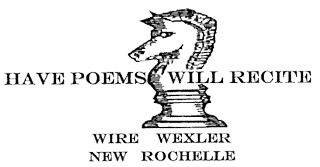
This poetry program for the elderly emerged from my enjoyment of poetry, my fascination with southern Spain during the period 711-1492, and my recent intimate encounters with very old age.
Of the three, poetry was the first and is the simplest. It started in my youth with song, which is a form of poetry. I followed that up with college classes about poetry, English and Spanish. Poetry has always had a place in my heart.
Spain came next, complicated and rich. Poetry written there 1,000 years ago and more was inspirational, as was the culture from which that poetry sprang.
Southern Spain captured my imagination during my first trip there, back in 1969, and I have visited it a half-dozen times. What first moved me about Andalucia — including the Alcazar in Seville, the Alhambra in Grenada and La Mezquita in Cordoba — all was there when the Muslims ruled the area, from 711 to 1492. During those eight centuries the part of Spain controlled by the Muslims was called al-Andalus in Arabic; “Andalucia” is the Spanish derivative of al-Andalus.
I came to understand from those trips and from my reading that Cordoba in particular is a place of great historical and cultural significance. The Muslims’ capital when they ruled al-Andalus, Cordoba by the 9th Century was the largest and richest city in Europe and contained the greatest library in Europe. The large corps of translators in that library, hired by the Muslim rulers, came from far and wide, and a principal objective of their work was to recapture and bring to life long-lost ancient Greek philosophy and science. Centuries later, the rest of Europe woke up to that learning, evidently in large part by means of the translations created in the libraries of Cordoba. From what I have read, it seems that the European Renaissance started centuries before it is commonly thought to have started, in al-Andalus, under enlightened Muslim rule. This history is not known by many in the West. It is told wonderfully by the late and beloved Yale Professor Maria Menocal in her book, The Ornament of the World.
While the story of al-Andalus has largely been forgotten, many still feel a keen affection for that time and place. The Islamic world, as I understand it, still mourns the loss of the cultural jewel that was al-Andalus. Jewish people also mourn the expulsion in 1492 and the loss of what they refer to as the Jewish Golden Age that took place there. Spain, itself, meanwhile, is in the process of coming to grips with its past, remote and recent, and at least in Cordoba the Spanish are very proud of al-Andalus and what it represented.
In my studies of al-Andalus, I also came across beautiful poetry written there during the period 711-1492. That poetry was written in Arabic by the Spanish Muslims and in Hebrew by the Spanish Jews. The Hebrew poetry of that time and place has very recently been much enhanced in English, with new translations by Princeton Professor Peter Cole. See his book, The Dream of the Poem (2007, Princeton University Press). The Arabic poetry of Al-Andalus has recently been illuminated by new translations by Cola Franzen. See her book, Poems of Arab Andalusia (1990, City Lights Publishers). Both books contain fascinating and important Introductions, by Professor Cole and Ms. Franzen respectively, and I urge you to buy and read those books, as well as Professor Menocal’s book, if you are at all interested in this subject.
That poetry arose from the marvelous culture in al-Andalus that today is referred to in Spanish shorthand as Convivencia, i.e., living together. Convivencia was more than mutual tolerance. It was a culture of intimate sharing and interchange, overseen by Muslim rulers who granted protection to Jews and Christians because they were considered, like Muslims, to be People of the Book. That protection was extended in exchange for agreement to pay a special tax and not to presume to question Muslim political power. The Jewish community in al-Andalus had no problem with either condition; for them it was a huge step up from what they had experienced under Visogoth rule before the Muslims took control in 711.
Also, the flowering of Hebrew poetry during this period in al-Andalus was a direct outgrowth of Arabic poetry, as the Jewish poets copied the rhythms and forms of their Muslim neighbors. Poetry, on many subjects, has always been very highly prized and developed in Arabic culture. But Hebrew non-liturgical poetry pretty much came to an end after the days of Kings David and Solomon. Al-Andalus not only brought Hebrew poetry back to life, al-Andalus nurtured it so that this poetry became an important part of what is now known as the Jewish Golden Age.
Convivencia prevailed in al-Andalus for about the first half of the almost 800 years of Muslim rule there, until another Islamic group, from Morocco, overthrew the rulers in Cordoba. Al-Andalus then broke up into a number of city-states, and Convivencia continued in many of them, including Granada, until 1492, when Grenada fell to the Reyes Catolicos Ferdinand and Isabela, and “La Reconquista” was complete.
After 9/11 it occurred to me that the largely unknown story of al-Andalus is now highly relevant and could be told through the poetry of that time and place. Moreover, that kind of telling through poetry could be very attractive to a Jewish audience, who would naturally have an interest in the Jewish Golden Age, and also perhaps to a Muslim audience because of the memory of lost al-Andalus and the fervid Arab (and Persian) love of poetry.
With those thoughts in mind, I prepared presentations of that poetry and of that story. My first presentation focused on Jewish poetry in al-Andalus and how it arose. The second focused on Muslim poetry in al-Andalus and more about Convivencia. A third was about Hebrew poetry more broadly. And a fourth was about Muslim poetry more broadly, including the brilliant and religiously inclusive Muslim spiritual poetry of Rumi and Hafez (also known as Hafiz), both of whom wrote in Persian, far to the east of al-Andalus, during the period of Muslim rule in al-Andalus.
I gave those presentations at my synagogue, Larchmont Temple, to a group of seniors who meet periodically to hear various kinds of talks. Those were my first poetry presentations.
It was at about this time that my parents’ health began deteriorating seriously, I stopped traveling, and my focus outside of my professional work shifted. I began to focus on the problems and needs of the very elderly — first, in the persons of my mother, my father and my mother-in-law, each of whom was well over 90 at that time, and then more generally. That refocusing led me to try to use poetry to engage and help the very elderly and disabled.
Advancing dementia was a large part of the problem with my mother and mother-in-law, and at some point it occurred to me that poetry could be helpful to them. My mother-in-law had a large store of songs and poems in her head, and when I began to read poems, and to sing song-poems, to her, she responded as if she were 20 or 30 years younger than she was. So I made a dose of poetry part of my regular interactions with my mother and my mother-in-law. This was particularly helpful to my mother during a very difficult period for her when she was in a rehabilitation facility after a fall.
After thinking more generally about how poetry might be helpful to the aged, and remembering the satisfying experience of giving the presentations about poetry in al-Andalus, one day I walked into the Sarah Neuman Center in Mamaroneck (which is not far from where I live) and presented to the Director of Volunteer Activity there the idea of a poetry program. She was willing to give it a try, and my first presentation to the elderly took place a few months later.
I would not have entered that nursing home if I had not previously confronted, over a sustained period of time, the physical, mental and emotional ravages of very old age and if I had not looked all that very serious deterioration directly in the face and engaged intimately with it, with love.
Marvin Wexler
mwexlerpoetry@gmail.com
